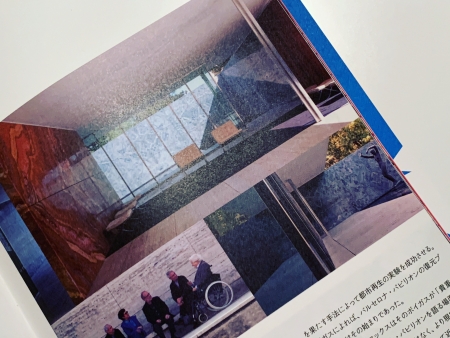人の動きを即す
空間で動的と静的の混ざり合う濃度の違いをつくり出すためには、人と建築の関係性からなる部分を動的、建築の素の部分、それは骨組みであったり、人の影響を受けない部分を静的として、動的と静的の区別がつかなくなるぐらいに混ざり合い、その違いをわかるためには人の動きが必要で、人の動きの頻度や重複度、密集度の度合いが濃度を表す。
「バルセロナ・パビリオン」でも空間を人が歩き回ることを考え、壁や柱の配置し、ガラスの種類を変え、大理石も肌理の違うものが使われており、プランや空間配置だけではなく、様々な工夫がされていた。
歩き回ることを即す、そのためには機能は関係が無いのかもしれない。「バルセロナ・パビリオン」には機能が存在しない、故に明確なモダニズムの理念を表現できるのだが、歩き回ることを即すためにはプランや仕上げの素材の工夫で良いということだろう。
"Fit the movement of people"
In order to create a difference in concentration where dynamic and static are mixed in space, the part consisting of the relationship between people and architecture is dynamic, the elemental part of architecture, which is the skeleton or is not influenced by people. The parts are static, and they are mixed to the extent that it is difficult to distinguish between dynamic and static, and it is necessary for people to move in order to understand the difference. Represents.
In the "Barcelona Pavilion", considering that people walk around the space, the walls and pillars are arranged, the type of glass is changed, and marble with different texture is used, not only in the plan and space arrangement, but also in various ways. It was devised.
The function may not be relevant for walking around. The "Barcelona Pavilion" has no function, so it can express a clear idea of modernism, but it seems that it is sufficient to devise plans and finishing materials in order to make it easier to walk around.


